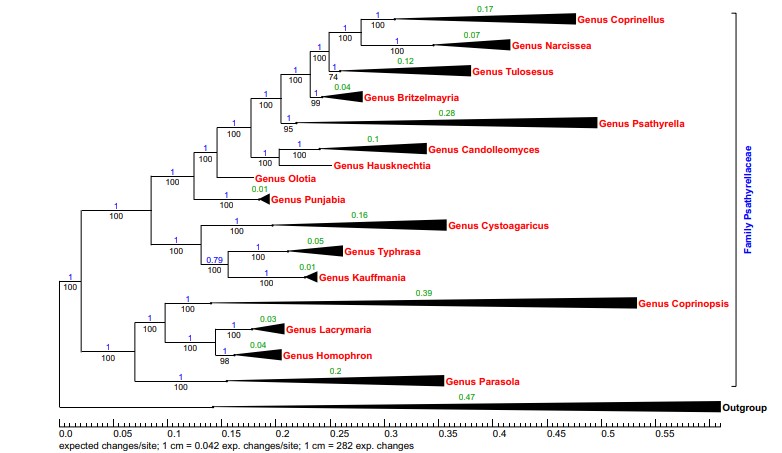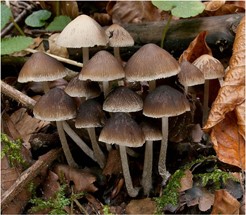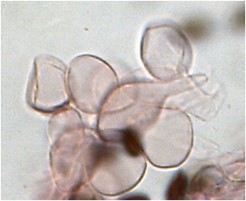Britzelmayria Wächter & A. Melzer, gen. nov. (Fig. 64)
Index Fungorum number: MB 831472; Facesoffungi number: FoF
Type species: Britzelmayria supernula (Britzelm.) Wächter & A. Melzer (Fig. 62).
Etymology: Named after the German mycologist Max Britzelmayr.
Description: Basidiomata medium-sized, terrestrial, with tendance to caespitose or tightly gregarious growth, with a distinctly rooting stipe. Veil minimally developed, consisting of subcylindrical hyphae. Spores medium to large in size, laterally at most inconspicuously phaseoliform, dark, germ pore central. Basidia 4-spored. Marginal cells of the lamellar edge lageniform, with deposits turning greenish in ammonia solution, interspersed with numerous clavate cells. Pleurocystidia similar to the cheilocystidia. Pileipellis with pileocystidia or cystidium-like elements (Fig. 63). Clamps present.
Representatives:
Psathyrella multipedata (Peck) A.H. Sm.; Ref.v.: LO237- 04 (Örstadius et al. 2015)
Psathyrella supernula (Britzelm.) Örstadius & Enderle; Ref.v.: LO250-04 (Örstadius et al. 2015)
Remarks:
Included is the section Multipedata Romagn., Bull Soc mycol Fr 98:11, 1982. The use of this name was discarded to avoid a tautonym. Moreover, Agaricus supernulus Britzelm. is the older name.

Fig. 42 Super collapsed phylogram of the complete family Psathyrellaceae incl. outgroup

Fig. 62 Britzelmayria supernula, Germany, Bavaria, Osterwarngau, 6.11.2011, M. Dondl; Photograph: M. Dondl

Fig. 63 Pileocystidia-like element in the pileipellis of Britzelmayria supernula, Belgium, Brabant, Steenokkerzeel, 13.11.2016, D. Deschuyteneer, AM1859; Photograph: A. Melzer

Fig. 64 Phylogram part of the genus Britzelmayria; position in tree see Fig. 42
Species
